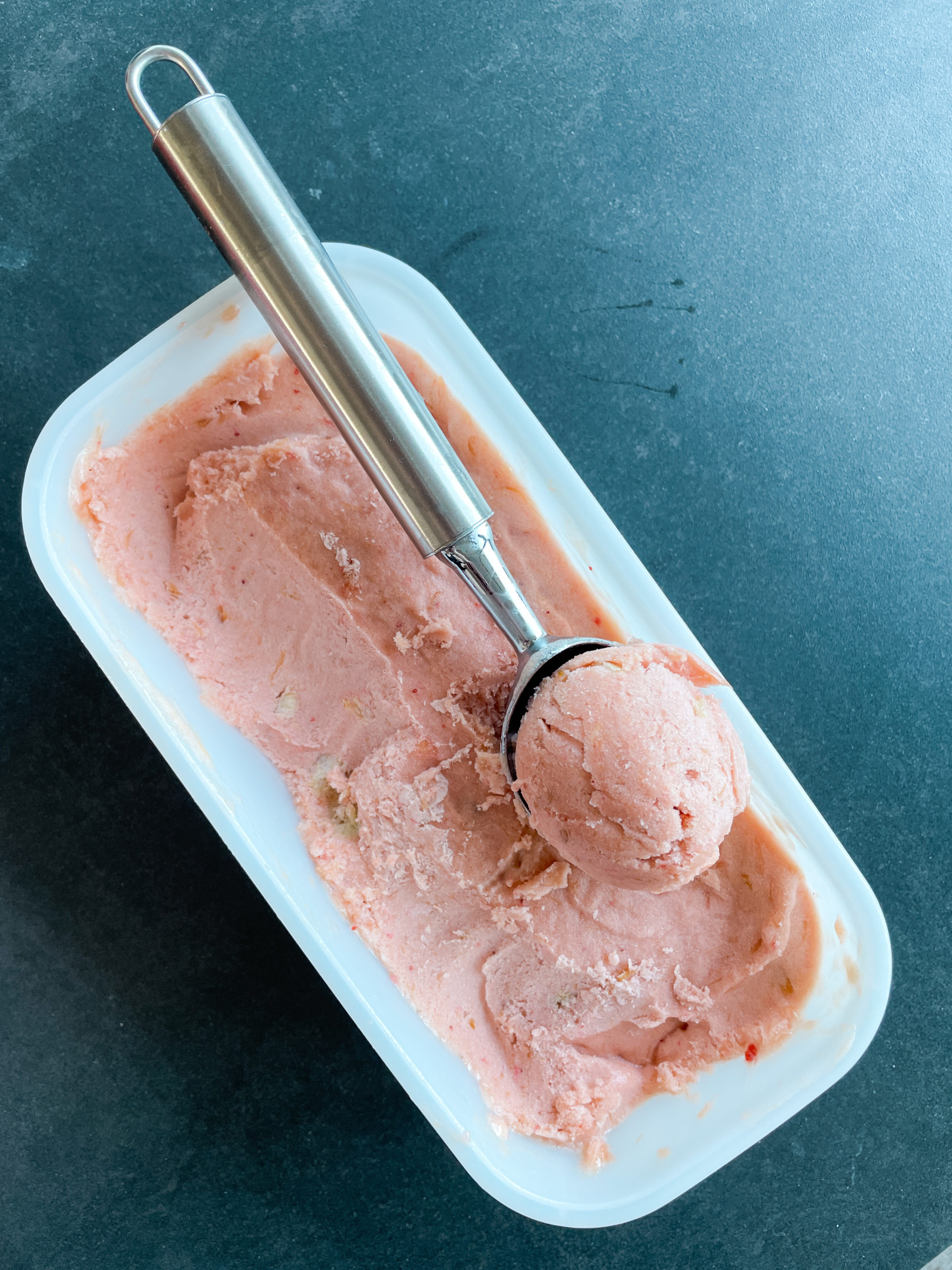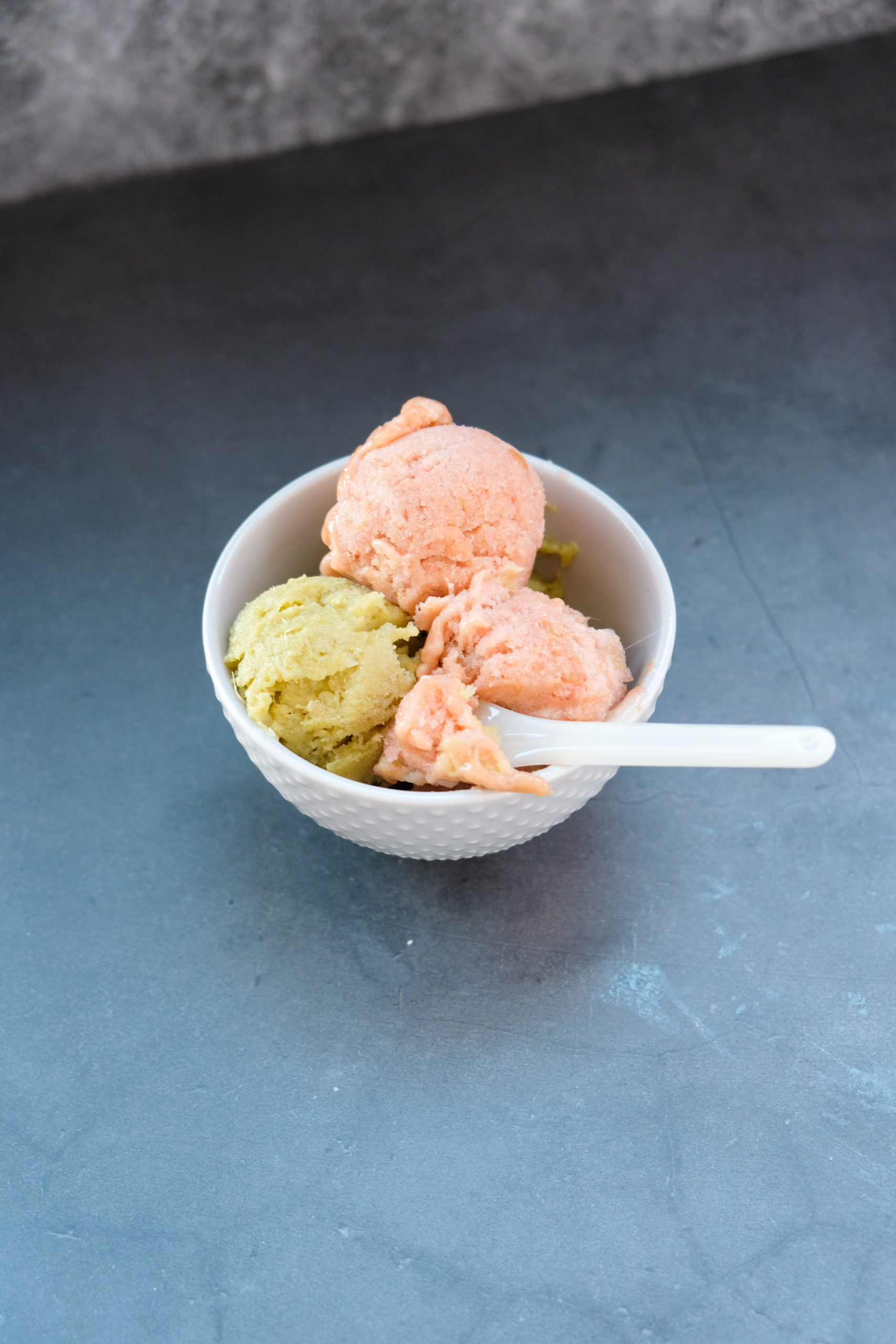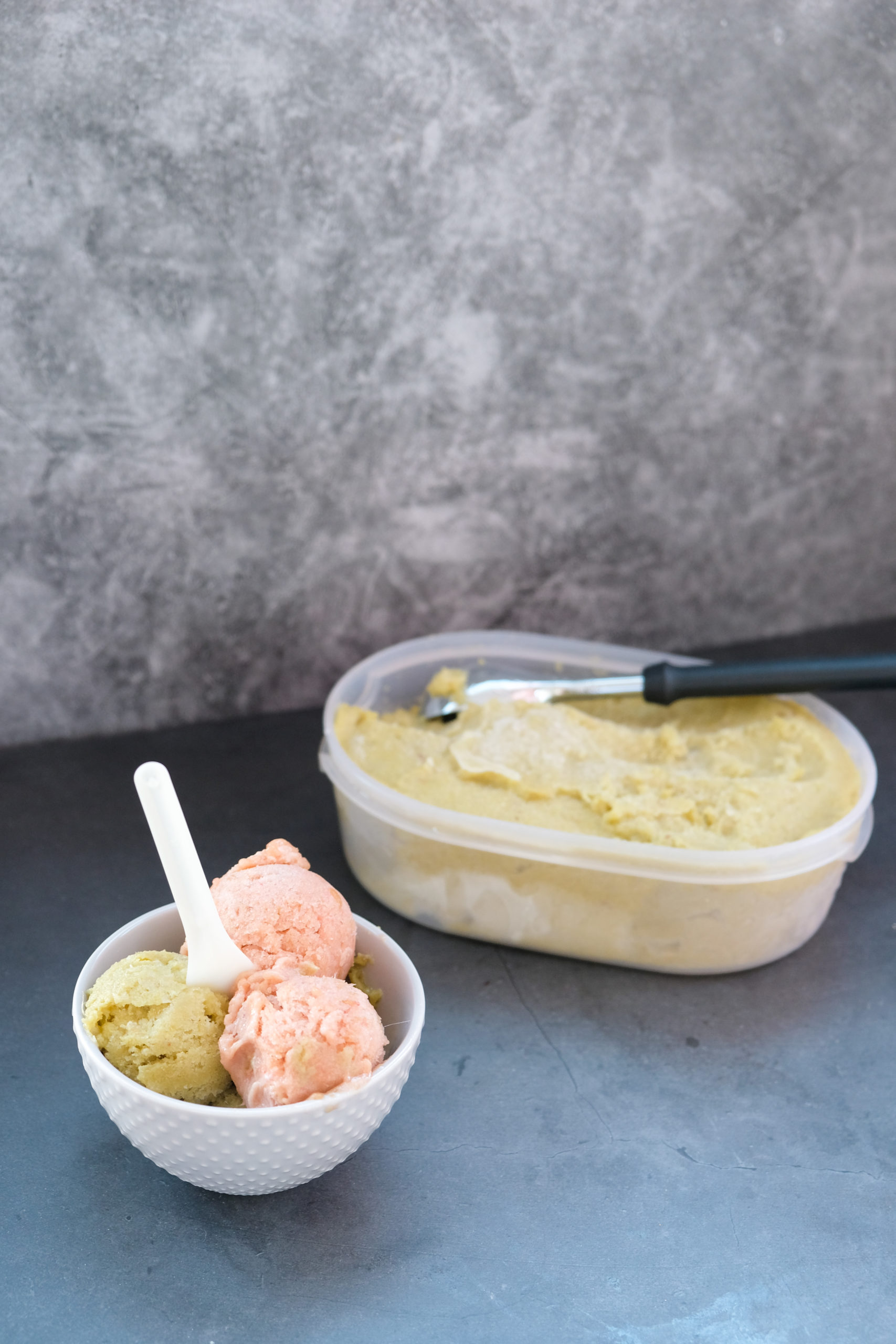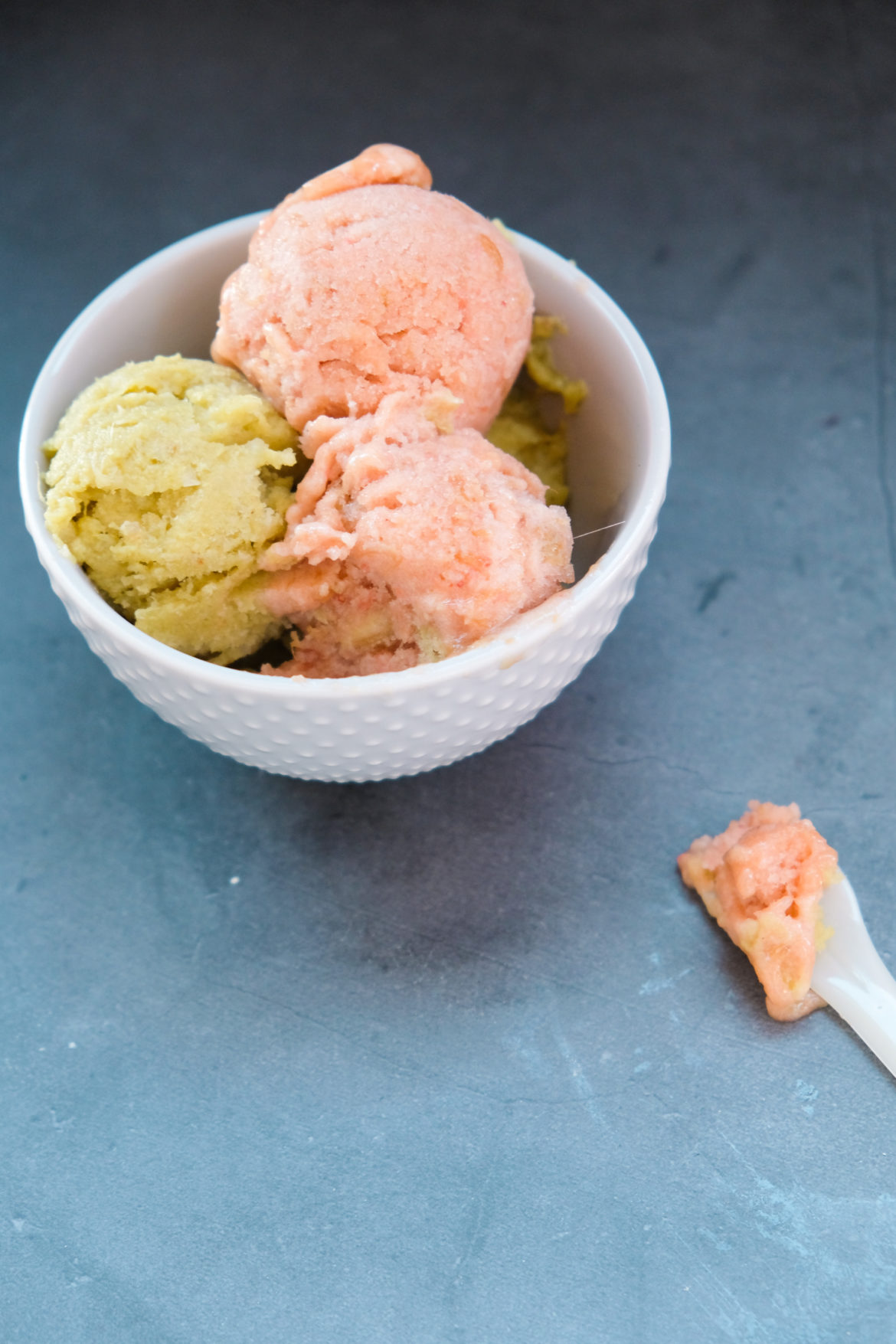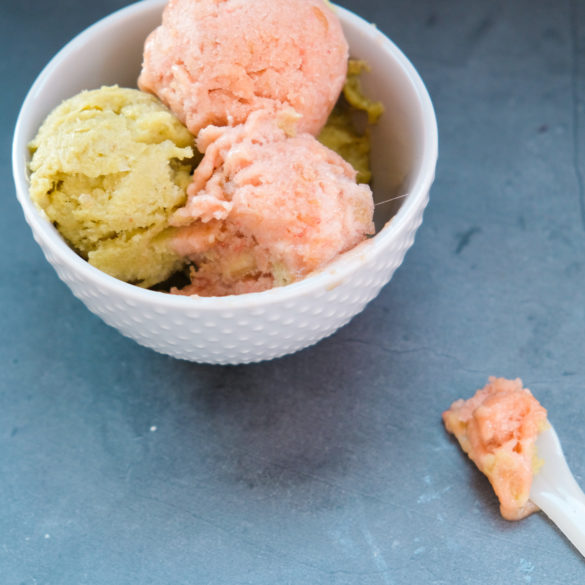Those who have seen my other recipes know that I love rhubarb and also ice cream. Rhubarb sorbet is probably the best way to enjoy rhubarb. Unfortunately, I only live in a flat with a balcony and don’t have a garden to plant rhubarb in. But luckily my favourite stall at the weekly market has super quality and lots of organic rhubarb on offer during the rhubarb season.
How do you store rhubarb properly? – In the form of rhubarb sorbet in the freezer, of course!
Anyone wondering how to store rhubarb properly and if you can freeze rhubarb? Sure, you can. But before freezing, I always clean and heat the rhubarb. The poisonous oxalic acid lies directly under the skin and if you peel the rhubarb, the amount of oxalic acid is reduced. If you now heat the rhubarb and even mix it with dairy products, then the level becomes even lower. My sorbets are dairy-free because I prefer the fruity taste and I am also lactose intolerant. I could use lactose-free products, but as I have some friends and relatives who also need dairy protein-free or vegan, I usually leave them out.
Milk in the rhubarb and pineapple sorbet
If you add some milk to the rhubarb-pineapple ice cream for flavour, I would use vegan “milk” though, as fresh pineapple has the enzyme bromelain and this doesn’t mix well with milk. It would also work with dairy products if you heated the pineapple, but then you could lose the vitamins. If you add the dairy products too early, the ice cream could also end up tasting bitter. So, you have to weigh up what is more important to you: dairy products to better tolerate the oxalic acid in the rhubarb or vegan “dairy products” with pineapple to prevent the bitter taste. Or simply a sorbet, without any kind of dairy products.
